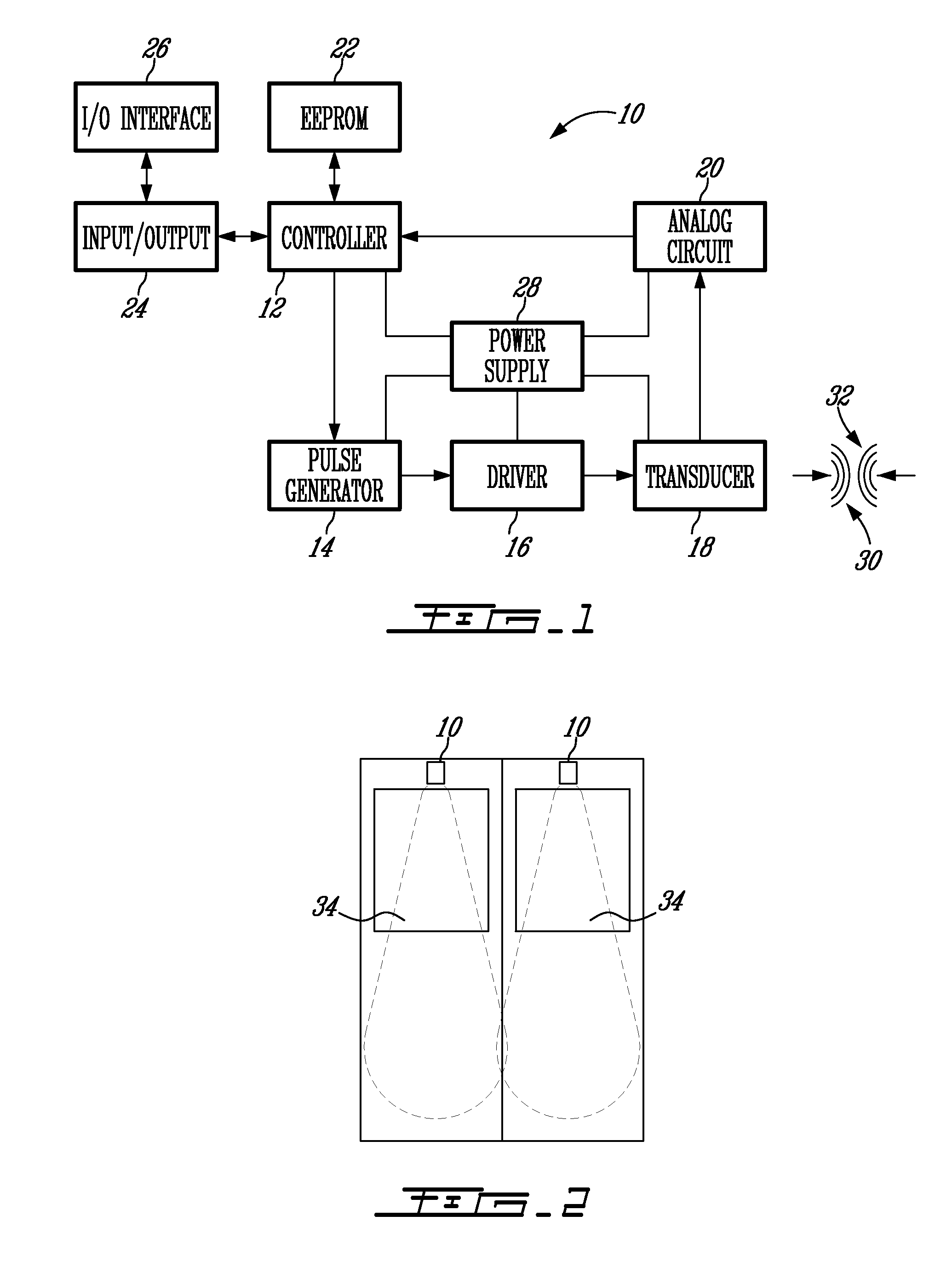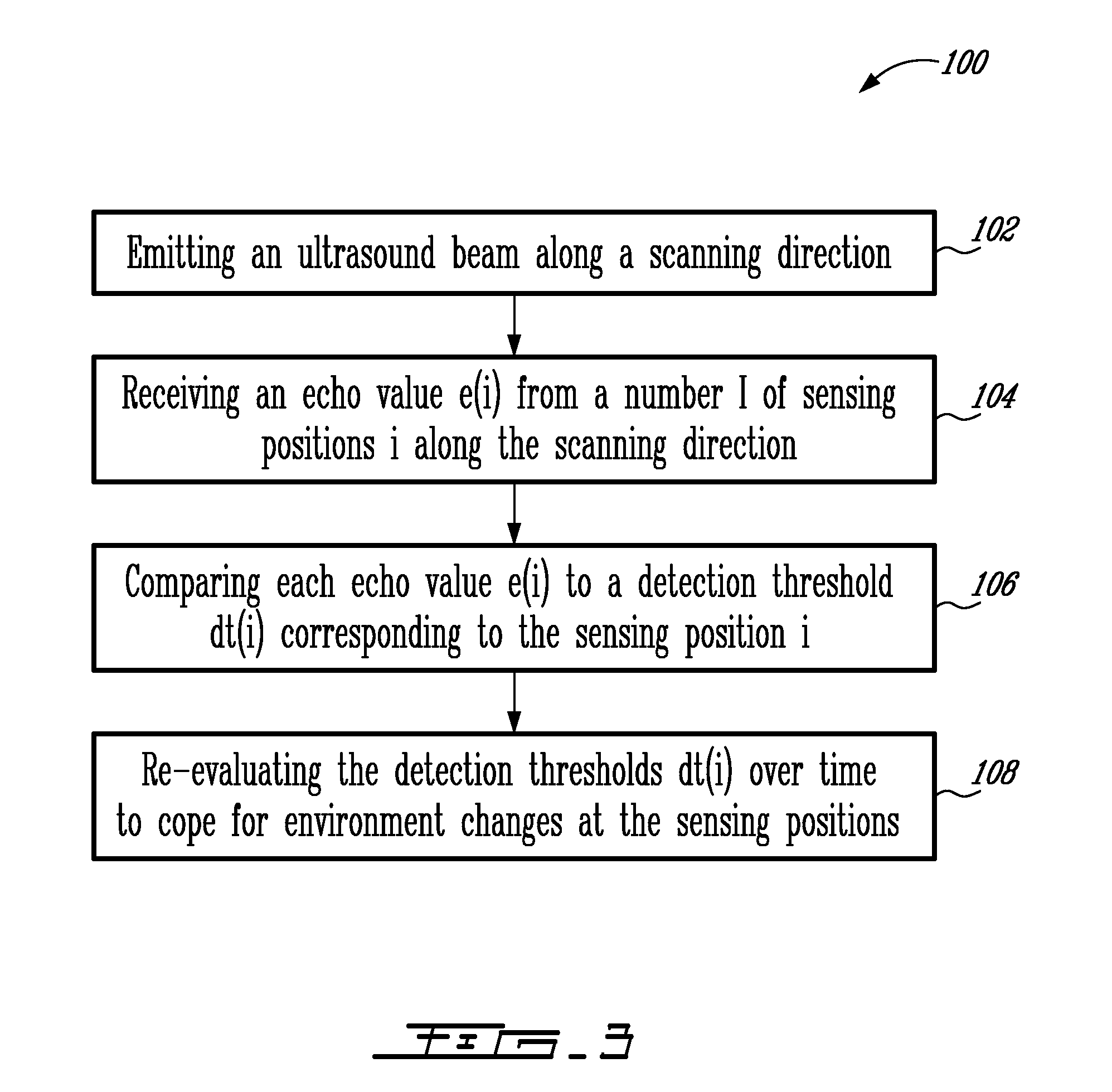Device and Method for Adaptive Ultrasound Sensing
a technology of adaptive ultrasound and sensing device, applied in the direction of door/window fitting, using reradiation, instruments, etc., can solve the problems of low reliability, unsuitable for many applications, and prone to wear and tear of the instrument, so as to improve the device and the method of ultrasound sensing
- Summary
- Abstract
- Description
- Claims
- Application Information
AI Technical Summary
Benefits of technology
Problems solved by technology
Method used
Image
Examples
Embodiment Construction
[0047] Turning now to FIG. 1 of the appended drawings, an adaptive ultrasound detecting system 10 according to an illustrative embodiment of the present invention will be described.
[0048] The detecting system 10 comprises a controller 12, a pulse generator 14 coupled to the controller 12, a sensor driver 16 coupled to the pulse generator 14, a transducer 18 coupled to the driver 16, an analog circuit 20 coupled to both the transducer 18 and to the controller 12, a memory means in the from of an EEPROM (Electrically Erasable Programmable Read Only Memory) 22 coupled to the controller 12, input / output (I / O) means 24, and an I / O interface coupled to the I / O means 24. The controller 12, pulse generator 14, sensor driver 16, transducer 18, and analog circuit 20 are connected to a power supply 28, in the form of a 12-24 DC (Direct Current) voltage source. Of course, the power supply 28 may take other forms allowing energizing the system 10.
[0049] The pulse generator 14 includes an oscil...
PUM
 Login to View More
Login to View More Abstract
Description
Claims
Application Information
 Login to View More
Login to View More - R&D
- Intellectual Property
- Life Sciences
- Materials
- Tech Scout
- Unparalleled Data Quality
- Higher Quality Content
- 60% Fewer Hallucinations
Browse by: Latest US Patents, China's latest patents, Technical Efficacy Thesaurus, Application Domain, Technology Topic, Popular Technical Reports.
© 2025 PatSnap. All rights reserved.Legal|Privacy policy|Modern Slavery Act Transparency Statement|Sitemap|About US| Contact US: help@patsnap.com



